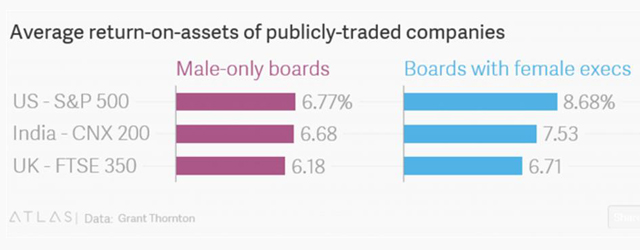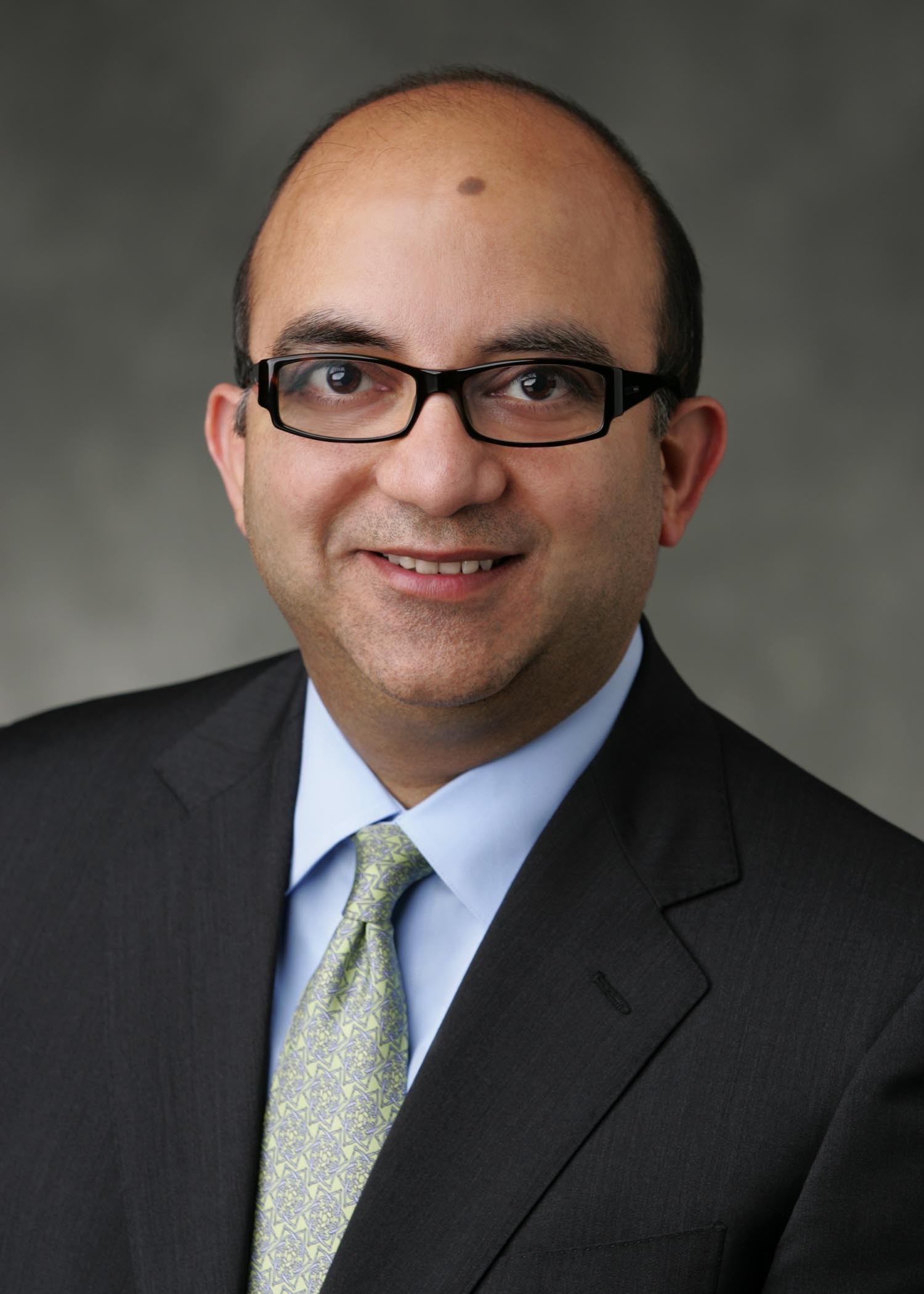The key to closing the gender diversity gap

Learning & Development
337 week ago — 10 min read
Summary: That a greater representation of women in an organisation broadens the range of perspectives in the decision-making process, stimulates critical thinking and creativity, and heightens business results and profitability, is no longer breaking news. Rajeev Peshawaria opines that to meaningfully address the issue of gender diversity at the top, leadership development must reinvent itself.
A global study from the Peterson Institute for International Economics and EY analysed results from 21,980 public traded companies in 91 countries, across various industries and sectors. The study showed that having at least 30 percent of women in leadership positions added 6% to net profit margin.
The 2015 study Women in business: The Value of Diversity by accountancy firm Grant Thornton looked at 1,050 businesses—200 in India, 350 in the UK, and 500 in the US – and compared the companies with at least one female executive board member with those run totally by men. The study found that diverse boards had a higher return on assets on average than the male-only boards, as the graphic below denotes.

While the gender dividend is clear and compelling enough to trigger drastic action, little has changed even though the advancement of women has been a focus of many corporations for over 25 years. While the numbers may be creeping upward, they are still staggeringly low. Women continue to be under-represented within top management ranks. This is despite the fact that organizations have long been using a cocktail of initiatives including legislated quotas, work flexibility, better onsite childcare, female advocacy and empowerment groups, and greater support from the top. Not discounting the importance of these policies and initiatives, the debate over why more women do not make it to the top remains unresolved. Which begs the question: are we treating the true cause of the problem or merely addressing the symptoms with very costly measures? Are we missing something greater, something more foundational upon which the other initiatives then complement?
Let’s look at some barrier-breaker examples, women who in their own right have shattered the hard glass ceiling.
Throughout her career she has faced unusual challenges—intellectual, political and otherwise—in the male-dominated worlds of law, politics and finance. She rebuffed all doubters after having started out as a lawyer who was told that she had little future in the field. French-born, she was the first woman to take the reins of the International Monetary Fund, at a time when the institution was in crisis and facing an international media firestorm. In her role, she’s had to go head-to-head with some of the world’s most important countries to help save the Euro. The silver-haired mother of two has maintained the difficult balance of speaking diplomatically while telling tough truths. On being an effective leader she has said, “I think that I would not have been an effective leader if I had not believed in what I was doing … Condition number two is to just give it all. In other words, to do it whole-heartedly and engaging completely in the mission that you set for yourself.”
This little girl was born and raised in India. Her mother instilled in her the belief that she could grow up to become whoever she wanted. Her confidence and work ethic helped her achieve an MBA from the Yale School of Management in 1980, and to start building a successful career. In 2006, she became PepsiCo’s first female CEO, and well as its first CEO not born in the US. Early on in her career she said men wouldn’t make eye contact with her in meetings and would consistently check her answers with other male colleagues. But rather than wilt under the pressure, she began to call men out on their actions, and it wouldn’t take long for them to realize she was highly adept at her job. Listed on the Forbes’ 50 Most Powerful Women list, she explains “If you want to be CEO of a large company or any company, it’s got to be a passion, it’s gotta be your calling. When somebody asks me about work-life balance, I think, what work-life balance? The job is work and life. Home is also work and life, so there is no balance.”
She was the first woman to be appointed as central bank governor in Malaysia and Asia. She was also the first woman to be named in the top ten central bank governors in the world. A mother-of-two, her determination steered the Malaysian economy through the 1998 Asian financial crisis, when she pegged the ringgit against the US dollar and banned offshore trading of the Malaysian currency despite criticism and pressure from many quarters. By the time she retired in 2016, having served 16 years as governor, she had accumulated lots of global acclaim including being named one of the top central bank governors in the world by Global Finance magazine. When asked why she chose to dedicate her life to civil service when anyone with an impressive resume like hers could have taken a different, more lucrative route, she responded saying, “because it’s a privilege. I believe I was given an opportunity to make a contribution, and I felt this is where I could make a contribution. It’s exciting and highly rewarding to be able to make a contribution to the Malaysian people and the economy, and to see the progress in the financial system that supports the entire economy.”
Christine Lagarde, Indra Nooyi and Zeti Akhtar Aziz are the remarkable women described above. What do they have in common? What does their success tell us about the lack of gender diversity at the top?
Were they working in environments that were more conducive for women? Where the challenges they faced less significant than those faced by others? Were they fortunate to have male mentors or supporters who helped them succeed despite the odds? Where these women, and others including Mary Barra, Hillary Clinton, Angela Merkel and Sheryl Sandberg exceptions to the rule?
The answer to each of these questions is a big NO. The challenges these women faced were and are by no means trivial. They have succeeded in spite of their tough male-dominated environments, not because of it. They succeeded because they dug deep and discovered what we call Leadership Energy – the internal force that prevents real leaders from caving in when faced with even the most formidable of resistance. They prevail because of one key fact: they know exactly why they want to lead in the first place.
Leadership energy is a function of two things: clarity of values and clarity of purpose. When one gets crystal clear about a set of deeply held values that move her, and develops an equally clear sense of purpose, one discovers leadership energy. Now, whenever she feels like giving up, she asks herself – what would I do if I were to act in accordance with my values; and where does this crisis sit within the overall context of my purpose? And the answers become clear.
Unfortunately, very few people, both men and women have real clarity of values and purpose. To be fair, these are difficult questions and finding the answers takes a long time. But without leadership energy, there can be no leadership nor can there be sufficient representation of women in the higher rungs. Flexible working hours, advocacy groups and legislated quotas are all good ideas, but the root cause of the problem lies in women’s (and men’s) ability and willingness to take leadership. A key insight that is often overlooked is this: A position can be given, but leadership must be taken. Putting someone in a powerful position gives no guarantee that leadership will take place.
Developing laser sharp clarity of values and purpose requires deep and honest reflection, which is increasingly difficult in today’s 24/7 connected environment. Everyone wants quick fix solutions these days, and hence the $80 billion a year leadership development industry only provides on-the-surface skill building. For example, emotional intelligence is touted as the be-all-and-end-all of leadership development these days. We at the Iclif Leadership and Governance Centre believe that emotional integrity – the courage to accept and acknowledge what one really wants for oneself and why – is more important than emotional intelligence. We also believe that contrary to conventional belief, once they make up their minds, women make stronger leaders compared to men. So, to meaningfully address the issue of gender diversity at the top, leadership development must reinvent itself to facilitate the discovery of long-lasting leadership energy.
This article was co-authored with Adel Jayasuria
Article source: https://iclif.org/articles/key-closing-gender-diversity-gap/
To explore business opportunities, link with me by clicking on the 'Invite' button on my eBiz Card.
Disclaimer: The views and opinions expressed in this article are those of the author and do not necessarily reflect the views, official policy or position of GlobalLinker.
Network with SMEs mentioned in this article
View Rajeev 's profile
Other articles written by Rajeev Peshawaria
Let the cream naturally rise to the top
292 week ago
The other duty of corporate governance
298 week ago
Most read this week
















Comments (4)
Share this content
Please login or Register to join the discussion